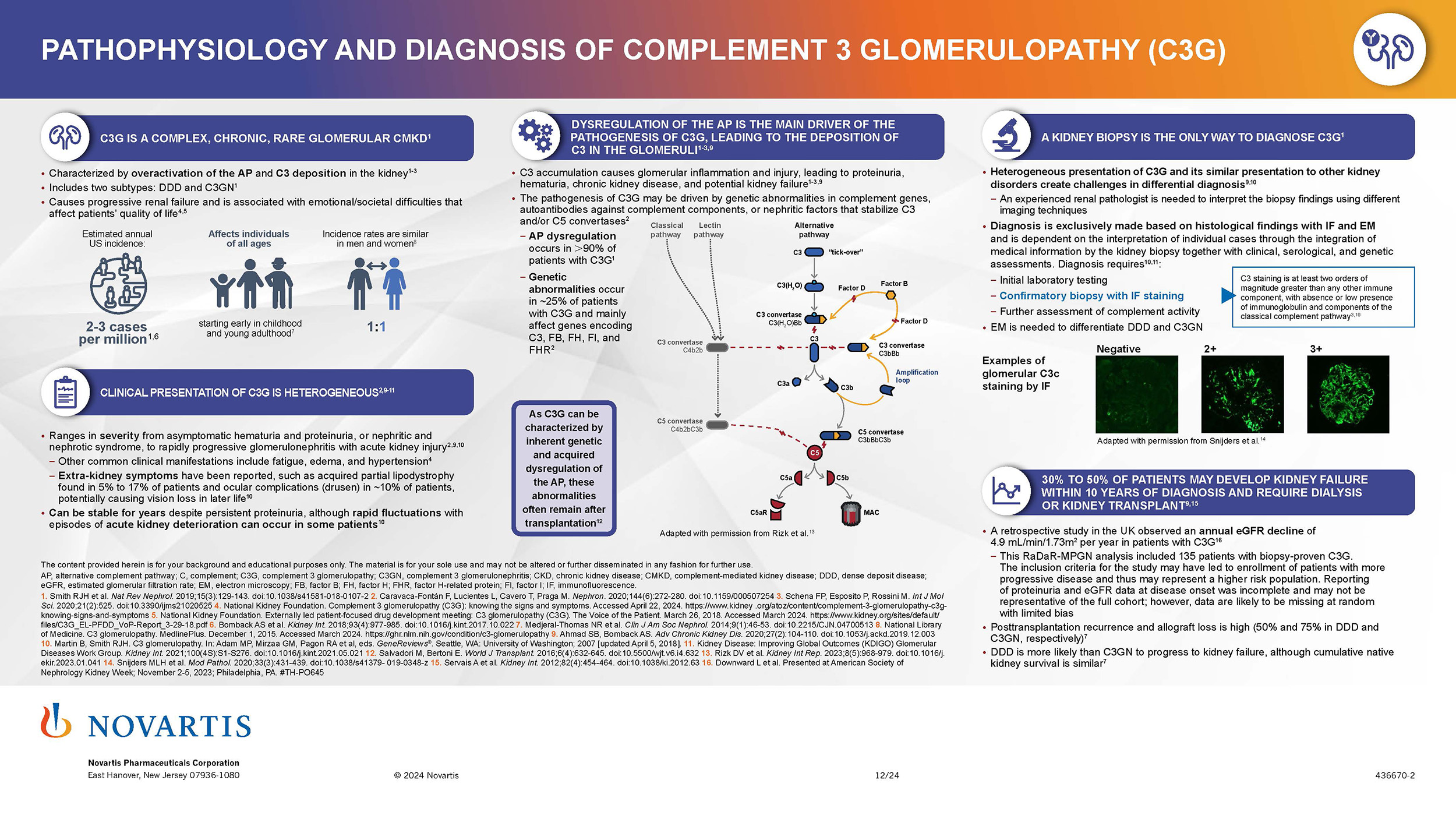C3G and IC-MPGN
Jump to topic
Test your knowledge
Your score:
0True or false? Of the two C3G subtypes, the mean age of diagnosis for C3GN is generally lower than for DDD.
To learn more, choose the answer that you find the most likely:
Show me the answer
Both C3GN and DDD can affect all ages, although the mean age of diagnosis for C3GN is generally higher than for DDD.1-5 In addition, C3GN is more common than DDD.2-5 Up to 50% of adult patients and ~70% of pediatric patients with C3G progress to end-stage kidney disease within 10 years.2,4,6
Which of the following statements is true regarding the role of complement in C3G pathogenesis and diagnosis?
To learn more, choose the answer that you find the most likely:
- a C3G diagnosis is based on detection of dominant C3 deposits by immunofluorescent kidney biopsy
- b ≥50% of patients with C3G have autoantibodies targeting C3 convertase (ie, C3 nephritic factors)
- c Complement testing is recommended in all patients with C3G
- d All of the above
Show me the answer
C3G arises from dysregulation and overactivation of the alternative complement pathway in >90% of patients or, less commonly, the classic or lectin pathways in <10% of patients. This dysregulation may be due to genetic mutations or autoantibodies, with ~50% of patients with C3GN and ~80% of patients with DDD found to have anti-C3 convertase autoantibodies. C3G is diagnosed by kidney biopsy with immunofluorescence staining for C3, with complement testing (eg, serum activity, autoantibody screening) recommended in all patients.
How many patients with C3G progress to ESKD within 10 years of diagnosis?
To learn more, choose the answer that you find the most likely:
Show me the answer
ESKD-free survival of less than 50% after 10 years has been observed in multiple studies of patients with C3G, irrespective of C3G subtype.1-3



